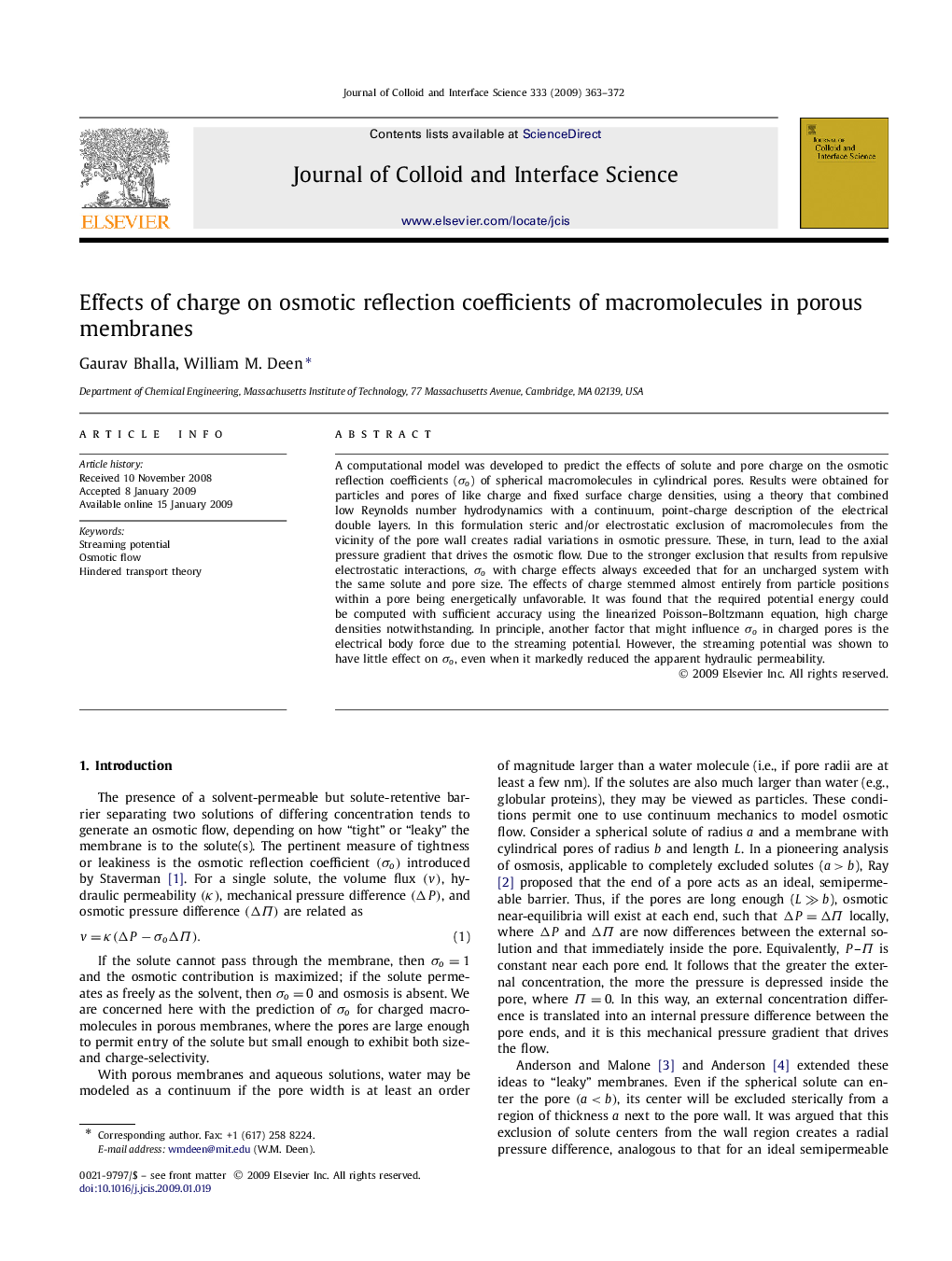| Article ID | Journal | Published Year | Pages | File Type |
|---|---|---|---|---|
| 610989 | Journal of Colloid and Interface Science | 2009 | 10 Pages |
A computational model was developed to predict the effects of solute and pore charge on the osmotic reflection coefficients (σoσo) of spherical macromolecules in cylindrical pores. Results were obtained for particles and pores of like charge and fixed surface charge densities, using a theory that combined low Reynolds number hydrodynamics with a continuum, point-charge description of the electrical double layers. In this formulation steric and/or electrostatic exclusion of macromolecules from the vicinity of the pore wall creates radial variations in osmotic pressure. These, in turn, lead to the axial pressure gradient that drives the osmotic flow. Due to the stronger exclusion that results from repulsive electrostatic interactions, σoσo with charge effects always exceeded that for an uncharged system with the same solute and pore size. The effects of charge stemmed almost entirely from particle positions within a pore being energetically unfavorable. It was found that the required potential energy could be computed with sufficient accuracy using the linearized Poisson–Boltzmann equation, high charge densities notwithstanding. In principle, another factor that might influence σoσo in charged pores is the electrical body force due to the streaming potential. However, the streaming potential was shown to have little effect on σoσo, even when it markedly reduced the apparent hydraulic permeability.
Graphical abstractOsmotic flow induced by macromolecules is affected by molecular and membrane charge. A theory based on continuum hydrodynamics and electrostatics was developed to predict the magnitude of this effect.Figure optionsDownload full-size imageDownload as PowerPoint slide
